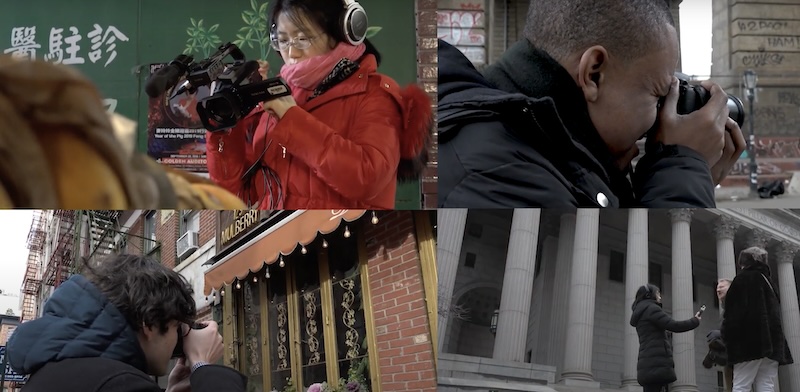We are not a MOOC. We are the opposite of a MOOC.
A MOOC, if you aren’t familiar, stands for massive open online course, and for a brief time about ten years ago they were hot. Seemingly every college in America was posting entire courses online. For the most part, these e-courses consisted of videotaped lectures, sometimes accompanied by reading materials, with the whole package slapped on the Internet. Voila, instant online course.
Naturally, that didn’t turn out so well. Few students actually completed these courses. The attrition rate has been as high as 90-95 percent. Students found passively watching hours of lectures on their computers tremendously boring. They would zone out, or pull up other browser windows and do something else while the professor droned on. Even a vice-president at one of the largest purveyors of MOOCs declared that MOOCS were “dead,” calling them “a failed product.” I wasn’t surprised that MOOCS suffered such an ignominious fall. The problem was that colleges took an educational model that worked in real life and, without changing anything, ported it over to the Internet. That’s usually a recipe for failure.
In education, it’s hard enough to engage students in a classroom for an entire semester. So how will we do it in this online master’s degree program in journalism when our students will log-in in far-flung places around the world?
Like I said, we are not a MOOC. We are neither ‘massive’ nor ‘open.’ Instead, we aim to surprise, delight, enchant, and, ultimately, engage our students. And we’ll do it by tapping the same game mechanics that make video games so pleasurable and addictive. As with a well-designed game, students must level up through material, accomplishing certain tasks, before they can advance to the next challenge.
Let’s be clear. I don’t mean games like Grand Theft Auto or Fortnite. Instead, I am talking about the characteristics of these games, the things that make them so fun and engaging, then applying them to a serious academic discipline. By doing this our students will learn as much, if not more, as they would in a traditional classroom.
As a result, we are designing journalism games so that students can learn how to report out whole stories in a virtual community—performing extensive literature searches, interviewing sources, taking accurate notes at press conferences, sifting through legal documents and academic studies, even filing Freedom of Information Act requests. Another game involve students immersing themselves in 360° video to accurately capture events. In addition, students will earn badges for completing additional units on data journalism, podcasting, publishing, and more.
Don’t for a minute think that gamifying education dumbs it down. On the contrary, it has the power to enhance learning. In one study, the Federation of American Scientists found that students could recall barely 10 percent of what they read, and only 20 percent of what they heard. They retained more when visuals accompanied an oral presentation (think Powerpoint)—then the number rose to 30 percent. If the students observed someone carrying out an action while explaining it, they retained 50 percent. But they remembered 90 percent if they did the job themselves, “even if only as a simulation.”
Here’s one close-to-home example. For the past decade I’ve worked with a research librarian at NYU on a library treasure hunt with smartphones. My students congregate in the cavernous atrium of NYU’s Bobst Library, all of them toting a smartphone with a preloaded QR code reader app. The test is composed of eight questions, each worth 1,000 points, and students have three hours to complete them. If a student needs help or requests a hint it costs 250 points.
The game is designed so that students must level up to advance (just like in a video game). The only way to get to the next question is through a previous correct answer. They all follow unique paths composed of different questions so there’s no collaboration, plus cheating is virtually impossible.
The first question requires each student to wade into the stacks to find a book associated with a specific call number. Inside the book we secreted a note with a barcode. The student scans it and is taken to their next question. The student might have to consult the Readers’ Guide to Periodical Literature to locate, say, a New Yorker article from 1923, find it on the microfilm, then create a PDF of it and email it to the librarian. She then issues the student’s next clue, which might entail listening to a speech by Amelia Earhart or Franklin Delano Roosevelt from the archives and filling in the blanks. Or venturing into a special collection of rare cookbooks to snap a photo of a recipe. Another clue might take the student to a reference book or into the library’s databases.
Before coming up with this treasure hunt, I used to arm students with 10 research questions and they would have a week to answer them. They hated it, and would complain about the assignment in class evaluations. But when I took the same types of questions and wrapped them in the package of a smartphone-based treasure hunt game, the treasure hunt quickly became the most popular activity of the semester—and students retain what they learned far better than if they had taken a tour of the library.
I didn’t invent this approach to education. Actually, the first time I encountered it was when I was in 5th grade. My teacher had created a self-paced history curriculum. As 10-year-olds my classmates and I covered European history from Christopher Columbus through the beginning of the 19th Century. To this day, decades later, I remember much of what I learned about Columbus; the Conquistadors, including Hernando Cortes and Francisco Pizarro and the terror they wrought on the Aztecs and Incas; Vasco Núñez de Balboa, who “discovered” the Pacific Ocean; Bartolomeu Dias, the Portuguese explorer who was first to sail around the tip of Africa; the Dutch East India Company and its chokehold on trade; the Lewis & Clark expedition, and much, more. I can’t say that for any other history class I have ever taken.
The difference wasn’t what we learned. It was how we learned. Because we had the option of teaming up with a friend, I worked with a classmate, who became as obsessed as I was. Today this type of pedagogy is referred to as social teaching. I didn’t know that at the time. All I knew was that we weren’t forced to sit down with old, moldy textbooks. Instead we read a chapter out of a book on, say, Cortes, then took a multiple-choice exam to gauge our comprehension. If we earned 80 percent or higher we leveled up to the next assignment, which might mean listening to a cassette recording of a brief lecture on “mercantilism” that Mr. Crew taped. After consulting a few other resources we’d have to write a report on mercantilism. If we did well on that we could head to the library to locate books on Pizzaro, or review an atlas reflecting the European sense of the world in the 16th century to plot explorers’ journeys on our own hand drawn maps.
Every class meant exposure to a different medium and a different way of learning. It was visual storytelling expressed as a treasure hunt lasting an entire school year. It wasn’t simply our thirst for knowledge that drove us. We were competing with each other. I didn’t want to slow my friend down by not scoring high enough on the plethora of exams we took and he felt the same. That meant we studied hard. We absorbed a lot of historical material that I can remember to this day. We were also competing against others in the class. There was a spiritual reward in being ahead of everyone else, so every time we worked on history, we focused. Best of all for us fifth graders, it was a lot of fun.
Decades later we are taking Mr. Crew’s approach to history and marrying it to a Master’s program in journalism from a major university. Coupled with our flipped classrooms, we expect our students will not only learn better online than if they actually picked up and moved to New York City, they will also enjoy doing it more.


